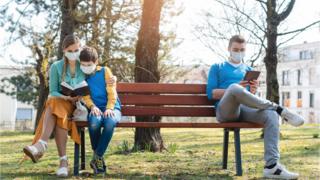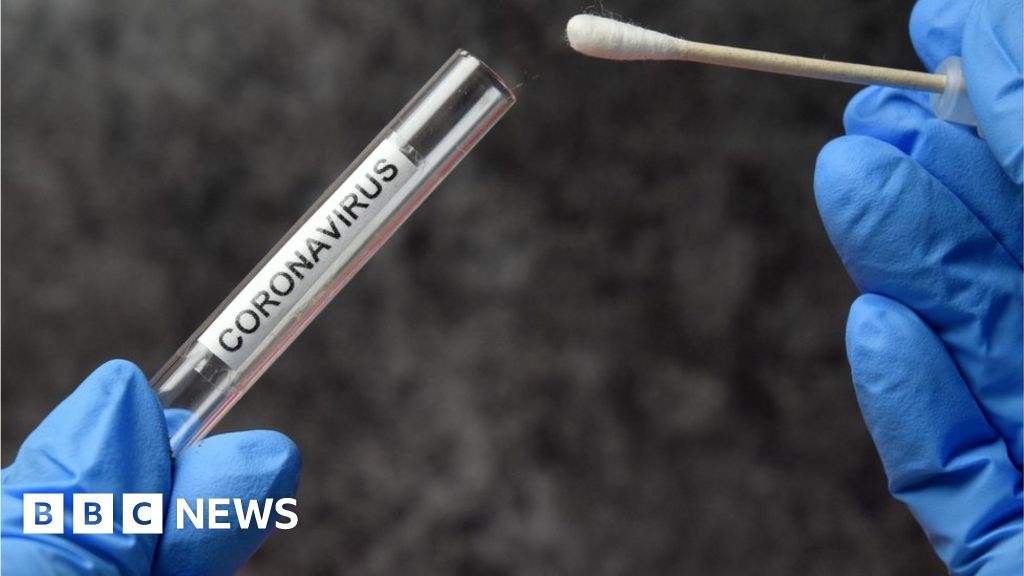 Image copyright
Getty Images
Image copyright
Getty Images
Policymakers say they are following the science on coronavirus. So what does science say about easing lockdown rules?
Prime Minister Boris Johnson has set out a provisional plan to start easing restrictions in England using "baby steps".
Changes will be gradual to avoid the risk of a second peak of infections that could overwhelm the NHS.
And he says the plan is conditional on infection and death rates staying low.
And if there are any signs they are starting to rise, the brakes will go back on.
This is some of the thinking behind this week's main announcements.
Why are the youngest children due to return to school first?
One of the key questions arising from the new guidance is why it's being suggested young children should return to school from the beginning of June.
Reception, Year 1 and Year 6 children would be the first to return.
As well as having particular educational needs, it is suggested:
younger children are less likely to become unwell if infected older children are more likely to have higher numbers of contacts outside school, so pose a greater transmission risk older children are typically better able to learn at homeYoung children are considered a high risk group when it comes to flu.
But they appear to be at low risk of becoming very ill with Covid-19.
Experts do not know, however, to what extent they can carry coronavirus and spread the disease to adults and each other.
And starting the return to school with only some year groups will allow them to assess the impact on infection rates.
Younger pupils may find it more difficult to use face coverings, which are not being recommended for children, and follow social-distancing rules, however.
So the focus will be on handwashing and other hygiene measures.
Why can I meet one person only?
In theory, meeting two or more people at a time from the same household should result in a roughly similar risk of infection as meeting just one.
But Health Secretary Matt Hancock told BBC Radio 4's Today programme the one-person rule would keep gatherings of people from different households small, making it easier to stick to the overarching principle of staying 2m (more than 6ft) apart.
Somewhere between 1-2m is generally accepted around the world as the distance within which there is most risk of inhaling droplets from another person's coughs and sneezes.
The best evidence suggests coronavirus is most commonly spread by these droplets entering through the eyes, nose and mouth, either directly or after touching a contaminated object.
But there is some evidence the virus can form aerosols, clouds of lighter particles that hang around in the air for longer, particularly in hospitals during procedures such as intubation.
Why is it OK to spend more time outdoors?
Activities such as golf and tennis will be permitted but only alone or with one other person.
That person can be from another household.
But social-distancing rules will still apply.
And playgrounds and outdoor gyms, where there is a higher risk of close contact and touching surfaces, will remain shut.
Once expelled, droplets fall relatively quickly to the ground.
But indoor environments have more surfaces for them to land on that others could then touch - and less ventilation.
And independent scientific advisers say the risk of infection is significantly lower outside.
Why the change on face-covering rules?
As more people go back to work, buses, Tubes and trains will become busier.
And the government is now advising people to wear a face covering when they come into contact with others they do not normally meet, in enclosed spaces where social distancing is not always possible - for example, on public transport or in some shops.
Image copyright Getty ImagesThe science behind the advice is somewhat patchy and controversial.
But there is some evidence face coverings might help stop people who are contagious but have no symptoms from unknowingly spreading the virus.
Why are the nations doing things differently?
One of the five tests the government says must be met before lockdown can be substantially eased is the rate of infection decreases to "manageable levels".
The reproduction (R) number - how many people each infected person passes their illness on to - needs to be well below one.
At the moment, the R number across the UK is estimated to be between 0.5 and one.
But it is thought to be higher in Scotland, Wales and Northern Ireland.
So there is less room for restrictions to be eased.
Even within England there are differences.
For example, the R will be much higher in care homes and hospitals where there are more cases of the disease.
Outside of those settings, the spread of coronavirus in the community appears to have been reduced, potentially to below epidemic levels, according to the Office for National Statistics (ONS).
It estimates 0.24% of people in the general community - about 136,000 people - are currently infected with coronavirus, based on testing a representative sample of more than 7,000 people in England between 26 April and 8 May.
Content available only in the UK

 5 years ago
769
5 years ago
769 

